Getting a six pack isn’t just about endless crunches—it starts in the kitchen. If your goal is to burn belly fat and reveal toned abs, the right diet can make all the difference. Exercise helps build the muscle, but without proper nutrition, those abs will stay hidden under stubborn fat. The good news?
You don’t have to starve yourself or follow extreme fads. Instead, focusing on proven, sustainable eating plans can help you shed fat, boost energy, and sculpt your core.
In this guide, we’ll explore the 10 best diets to burn belly fat and get six pack abs, backed by science and designed for real results.
These diets focus on high-protein foods, balanced macros, fat-burning meals, and clean eating strategies that fuel workouts while keeping your metabolism active.
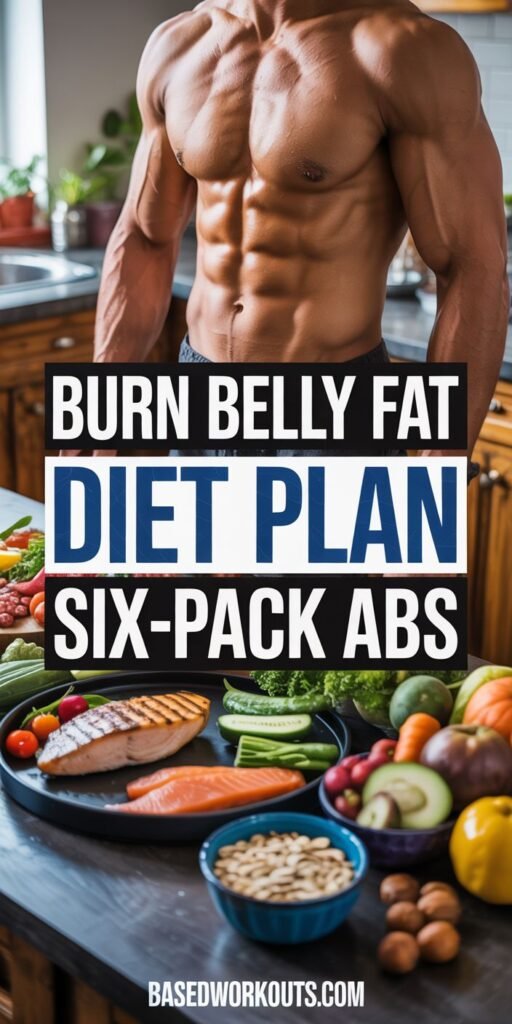
Whether you’re looking for something simple like a high-protein diet, structured like intermittent fasting, or long-term like the Mediterranean diet, there’s an approach here to fit your lifestyle.
Pair these eating strategies with consistent training, and you’ll be on your way to flatter abs, lower body fat, and visible six packs.
Here’s what you’ll discover in this post:
✅ The best diets for losing belly fat naturally
✅ Nutrition tips to fuel workouts & reveal your abs
✅ Foods to eat (and avoid) for six pack definition
✅ Easy-to-follow diet plans that deliver results
Remember: abs are made in the kitchen as much as they are in the gym.
Let’s dive into the 10 most effective diets to burn belly fat and build a lean, defined core.
Recommended Products & Supplements to Achieve Results
Achieving your muscle gain and fat loss goals is much easier when you have the right tools, nutrition, and supplements to support your workouts and recovery.
Below is a comprehensive list of products that are highly effective for building lean muscle, burning fat, and supporting overall health.
1. Whey Protein Powder
- Why you need it: Whey protein is a fast-digesting protein source that supports muscle repair and growth, especially post-workout. It ensures you hit your daily protein targets even on busy days.
- Recommended use: 1–2 scoops per day, especially after workouts or as a protein-rich snack.
- Tip: Choose a high-quality, low-sugar whey isolate for maximum benefits.
2. Creatine Monohydrate
- Why you need it: Creatine increases strength, power, and muscle endurance, allowing you to lift heavier and recover faster.
- Recommended use: 3–5 grams daily, with or without a loading phase.
- Tip: Mix with water or your post-workout shake for convenience.
3. BCAAs (Branched-Chain Amino Acids)
- Why you need it: BCAAs help prevent muscle breakdown, especially during fasted workouts or calorie deficits. They also support faster recovery.
- Recommended use: 5–10 grams before or during workouts.
- Tip: Opt for a BCAA supplement with a 2:1:1 leucine ratio for optimal muscle support.
4. Multivitamins
- Why you need it: Multivitamins fill in any nutritional gaps, ensuring your body has all essential vitamins and minerals for energy, immunity, and recovery.
- Recommended use: 1 serving daily with a meal.
- Tip: Choose a multivitamin specifically designed for active men or women, depending on your needs.
5. Omega-3 Fatty Acids (Fish Oil or Algae Oil)
- Why you need it: Omega-3s reduce inflammation, improve heart health, and support joint recovery after intense workouts.
- Recommended use: 1–3 grams daily with food.
- Tip: Choose high-quality, purified fish oil or algae oil to avoid heavy metals.
6. Pre-Workout Supplements
- Why you need it: Pre-workout powders containing caffeine, beta-alanine, and nitric oxide boosters enhance energy, focus, and blood flow during training.
- Recommended use: 20–30 minutes before workouts.
- Tip: Start with half a serving to assess tolerance, especially if sensitive to caffeine.
7. Resistance Bands & Home Workout Equipment
- Why you need it: Resistance bands, dumbbells, and kettlebells allow for strength training at home, helping you build muscle and burn fat efficiently.
- Recommended use: Include full-body resistance exercises 3–5 times per week.
- Tip: Choose bands with varying resistance levels and adjustable dumbbells for progressive overload.
8. Meal Prep Containers & Blender
- Why you need it: Preparing meals in advance keeps you consistent with nutrition, reduces reliance on processed foods, and makes it easy to hit calorie and protein goals.
- Recommended use: Meal prep weekly, store meals in portioned containers, and use a blender for protein shakes and smoothies.
- Tip: Choose BPA-free containers and a high-powered blender for versatility.
9. Smart Scale or Body Composition Monitor
- Why you need it: Tracking body fat percentage, muscle mass, and overall progress helps you stay accountable and adjust diet or workouts effectively.
- Recommended use: Measure weekly or bi-weekly to track changes.
- Tip: Focus on trends over time, not single-day fluctuations.
10. Water Bottle & Hydration Tools
- Why you need it: Staying hydrated is essential for metabolism, fat burning, muscle recovery, and workout performance.
- Recommended use: Drink at least 2–3 liters daily, more if you exercise intensely.
- Tip: Use a bottle with measurements to track intake easily.
Bottom Line
While consistent nutrition and training are the most critical factors for results, these products and supplements provide extra support, convenience, and efficiency.
Using high-quality protein, creatine, BCAAs, omega-3s, and vitamins, along with proper workout tools and meal prep strategies, can accelerate muscle growth, enhance fat loss, and improve recovery, helping you reach your fitness goals faster.
1. Low-Carb Diet
A low-carb diet focuses on reducing the intake of carbohydrates while increasing protein and healthy fats.
This approach is popular among people looking to lose fat while preserving lean muscle.
Carbs are your body’s primary energy source, so lowering them forces your body to use stored fat for energy, which can accelerate fat loss.
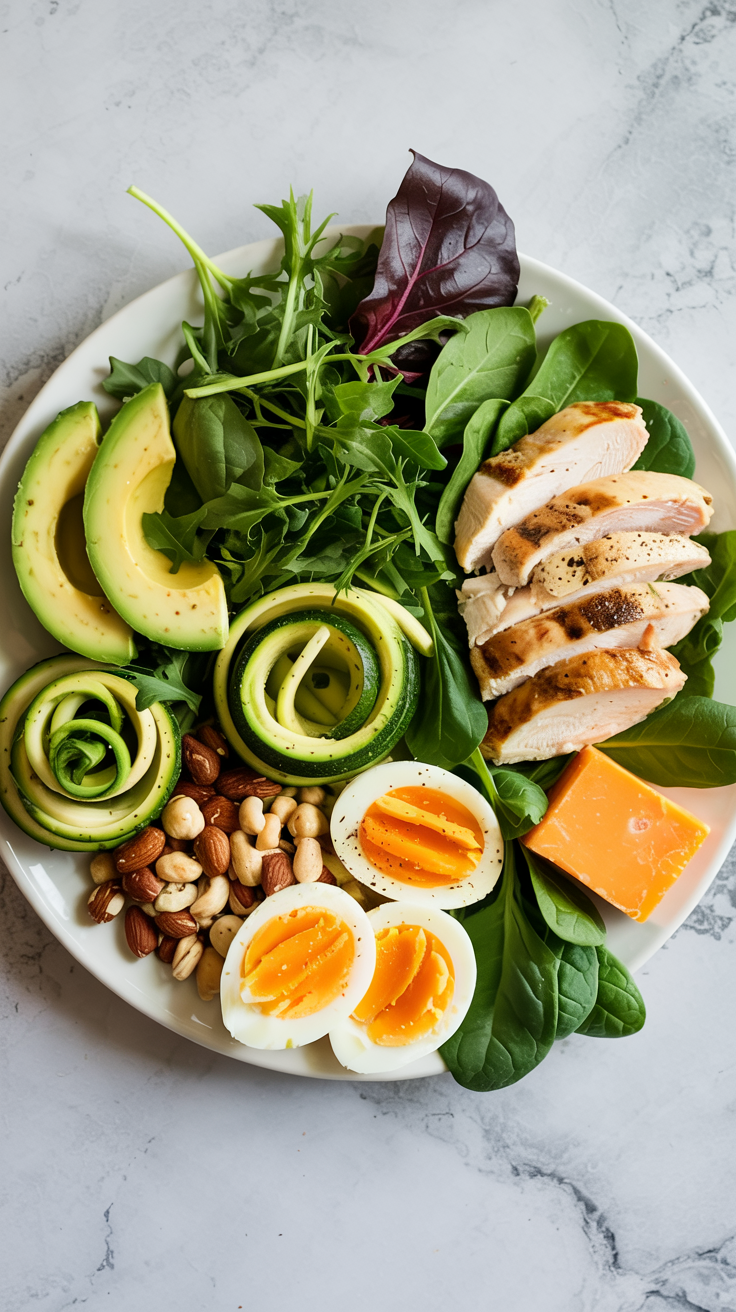
How it works:
- When you cut carbs, your insulin levels drop, prompting your body to burn fat for fuel.
- Increased protein intake ensures your muscles are protected and continue to grow even in a calorie deficit.
- Healthy fats from sources like nuts, avocado, olive oil, and fatty fish keep you full and support hormone production.
Benefits of a Low-Carb Diet for Muscle Gain and Fat Loss:
- Fat loss: Reduces body fat while preserving lean muscle mass.
- Improved insulin sensitivity: Helps your body manage blood sugar more efficiently.
- Reduced cravings: Protein and fat keep you fuller, decreasing the temptation to snack on processed foods.
- Better muscle definition: Lower body fat levels make your muscles appear more defined.
Foods to Eat on a Low-Carb Diet:
- Lean meats: chicken, turkey, lean beef
- Fish: salmon, tuna, mackerel
- Eggs and dairy: Greek yogurt, cottage cheese, cheese
- Low-carb vegetables: spinach, broccoli, zucchini, peppers
- Healthy fats: avocado, almonds, olive oil, walnuts
Foods to Limit or Avoid:
- Sugary snacks and drinks
- White bread, pasta, and rice
- Processed or fried foods
- High-sugar fruits (like bananas, grapes) in excess
Tips for Success:
- Track your carb intake to ensure you stay within your target range.
- Combine with strength training to maintain or build muscle.
- Drink plenty of water to prevent dehydration and support metabolism.
Best time to reduce carbs:
- Some prefer reducing carbs post-workout, while maintaining them around training sessions for energy.
- Others follow a consistent low-carb approach throughout the day. The key is consistency and finding what works for your energy levels.
In short, a low-carb diet can be an effective strategy for cutting fat, improving muscle definition, and supporting overall metabolic health, especially when paired with resistance training and high-quality protein sources.

https://amzn.to/3UF1l14Truvani Vegan Pea Protein Powder | Vanilla | 20g Organic Plant Based Protein | 18 Servings | Keto | Gluten & Dairy Free | Low Carb | No Added Sugar
2. Mediterranean Diet
The Mediterranean diet is widely recognized as one of the healthiest eating patterns in the world, and it’s increasingly popular among fitness enthusiasts looking to support muscle gain, fat loss, and overall health.
Unlike strict fad diets, it’s a flexible, balanced approach focused on whole, minimally processed foods inspired by the traditional eating habits of countries bordering the Mediterranean Sea.

How It Works
The Mediterranean diet emphasizes fresh, nutrient-dense foods, healthy fats, lean proteins, and complex carbohydrates. Instead of calorie counting, it focuses on quality, variety, and portion control, which naturally supports a healthier body composition.
Key principles include:
- Plenty of fruits and vegetables: Provide fiber, antioxidants, and essential vitamins.
- Whole grains: Brown rice, quinoa, oats, and whole-grain bread for steady energy.
- Healthy fats: Olive oil, nuts, seeds, and fatty fish like salmon for heart health and hormone support.
- Lean proteins: Fish, seafood, poultry, beans, lentils, and moderate dairy.
- Limited red meat: Consumed sparingly to reduce saturated fat intake.
- Herbs and spices: Replace excess salt and add flavor and antioxidants naturally.
Benefits of the Mediterranean Diet for Fitness
- Supports lean muscle growth: Protein from fish, poultry, dairy, and legumes helps repair and build muscle.
- Promotes fat loss: Fiber-rich foods and healthy fats help you feel full while maintaining a calorie-controlled diet.
- Heart health: High in omega-3 fatty acids and antioxidants, the diet reduces cholesterol, inflammation, and cardiovascular risk.
- Sustainable energy: Whole grains and complex carbs provide steady energy for workouts.
- Longevity and wellness: Anti-inflammatory foods and antioxidants help overall recovery and long-term health.
Example Mediterranean Meal Plan
- Breakfast: Greek yogurt with berries, chia seeds, and a drizzle of honey.
- Lunch: Grilled chicken or salmon with quinoa, roasted vegetables, and olive oil.
- Snack: Handful of almonds or walnuts with a piece of fruit.
- Dinner: Lentil salad with mixed greens, tomatoes, cucumbers, feta cheese, and olive oil dressing.
- Optional: Small glass of red wine with dinner (moderation is key).
Tips for Success
- Cook with olive oil instead of butter or vegetable oils.
- Include fish 2–3 times per week for omega-3s.
- Make vegetables half of your plate at every meal.
- Combine with strength training or cardio for best results if your goal is muscle gain or fat loss.
- Use herbs and spices instead of excess salt to improve flavor and nutrition.
Bottom line: The Mediterranean diet is a flexible, heart-healthy, and performance-friendly eating plan that supports lean muscle, fat loss, and long-term wellness.
Its focus on nutrient-dense, whole foods makes it ideal for anyone looking to eat clean while fueling workouts and improving overall health.
3. High-Protein Diet
A high-protein diet is one of the most effective strategies for building muscle, losing fat, and supporting overall fitness.
Protein is the primary building block for muscles, so increasing your intake can directly enhance recovery, muscle growth, and strength gains when paired with resistance training.
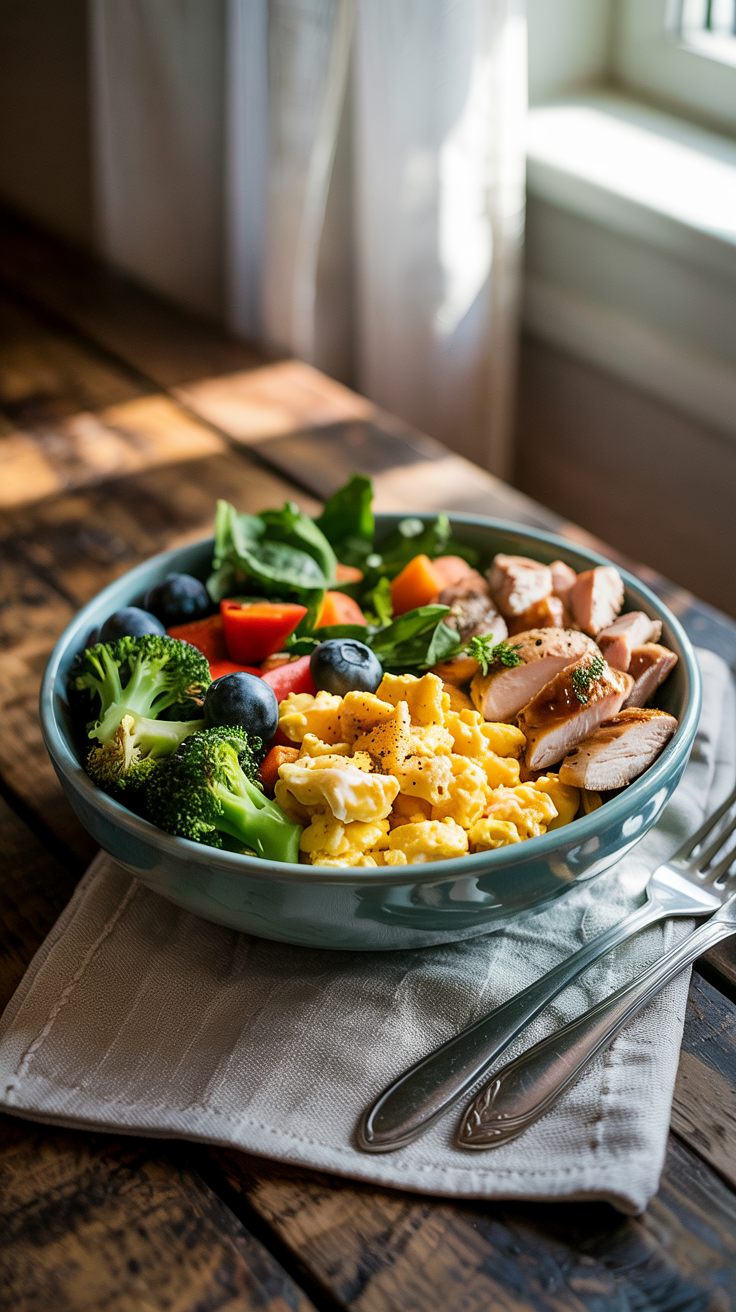
How It Works
When you consume protein, your body breaks it down into amino acids, which are essential for repairing and building muscle tissue. A high-protein diet also has several benefits for metabolism and body composition:
- Muscle preservation: Eating enough protein while in a calorie deficit prevents your body from breaking down muscle for energy.
- Satiety and fat loss: Protein is more filling than carbs or fat, helping control hunger and reduce overall calorie intake.
- Increased calorie burn: Digesting protein requires more energy than digesting fats or carbs, slightly boosting metabolism (known as the thermic effect of food).
How Much Protein Do You Need?
For muscle gain, aim for:
- 1.6–2.2 grams of protein per kilogram of body weight per day
- Example: A 70 kg (154 lbs) person should consume 112–154 grams of protein daily
- Spread protein intake across 3–6 meals per day to maximize muscle protein synthesis
Best High-Protein Foods
- Animal-based: Chicken breast, turkey, lean beef, fish, eggs, Greek yogurt, cottage cheese, milk, and whey protein.
- Plant-based: Tofu, tempeh, lentils, quinoa, beans, chickpeas, nuts, and seeds.
Example High-Protein Meal Plan
- Breakfast: Scrambled eggs with spinach and turkey bacon
- Snack: Greek yogurt with almonds
- Lunch: Grilled chicken breast with quinoa and roasted vegetables
- Snack: Whey protein shake with a banana
- Dinner: Salmon with brown rice and steamed broccoli
- Optional: Cottage cheese or a protein smoothie before bed
Tips for Success
- Combine high-protein foods with complex carbs for energy during workouts.
- Include healthy fats to support hormone function.
- Track your intake to ensure you meet daily protein goals.
- Use protein supplements if you have trouble hitting your daily requirements through food alone.
Bottom line: A high-protein diet is essential for muscle growth, fat loss, and overall fitness performance. By prioritizing protein in every meal, you can maximize recovery, protect lean muscle, and fuel your workouts efficiently.
4. Intermittent Fasting
Intermittent fasting (IF) is not a diet in the traditional sense—it’s an eating pattern that alternates between periods of eating and fasting.
Instead of focusing on what you eat, intermittent fasting focuses on when you eat, which can have a significant impact on fat loss, muscle retention, and overall metabolic health.
Many athletes, bodybuilders, and fitness enthusiasts use IF to improve body composition while simplifying their nutrition.

How Intermittent Fasting Works
When you fast, your body undergoes several key changes that support fat loss and muscle preservation:
- Insulin levels drop: During fasting, insulin, the hormone responsible for storing fat, decreases. Lower insulin levels allow your body to access stored fat more easily, turning it into energy.
- Growth hormone increases: Fasting stimulates the production of growth hormone, which not only helps preserve lean muscle mass but also supports fat metabolism.
- Cellular repair and longevity: Fasting triggers autophagy, the body’s natural process of cleaning out damaged cells, improving overall health and potentially supporting longevity.
- Shift from glucose to fat for energy: After several hours without food, your body begins burning stored fat instead of relying on carbohydrates, which is particularly effective for reducing stubborn body fat around the midsection.
Popular Intermittent Fasting Methods
There are several effective ways to practice intermittent fasting, each with its own flexibility and suitability:
- 16:8 Method: Fast for 16 hours and eat all meals within an 8-hour window. This is beginner-friendly and allows you to skip breakfast or dinner while still eating normally during your eating window.
- 5:2 Method: Eat normally for five days of the week, and consume only 500–600 calories on two non-consecutive “fasting” days.
- Alternate-Day Fasting: Alternate between full eating days and fasting days or very low-calorie intake days. This approach can accelerate fat loss but may be more challenging for beginners.
- Eat-Stop-Eat: Involves one or two 24-hour fasts per week. Best for advanced practitioners who are comfortable managing hunger and energy levels for longer fasting periods.
Benefits of Intermittent Fasting
Intermittent fasting offers a wide range of benefits beyond simple fat loss:
- Effective fat burning: By lowering insulin levels and increasing fat utilization, IF helps your body burn stored fat more efficiently.
- Muscle preservation: When combined with a high-protein diet and strength training, IF can help maintain lean muscle mass during a calorie deficit.
- Improved metabolic health: Fasting periods reduce blood sugar fluctuations, improve insulin sensitivity, and may reduce the risk of type 2 diabetes.
- Heart health: Studies show fasting can improve cholesterol levels, reduce inflammation, and support cardiovascular health.
- Enhanced brain function: Intermittent fasting may increase mental clarity, focus, and even reduce the risk of neurodegenerative diseases.
- Simplified meal planning: Fewer meals can make diet tracking easier and reduce the temptation to overeat or snack unnecessarily.
How to Implement Intermittent Fasting
- Stay hydrated: Water, herbal teas, and black coffee are excellent ways to stay hydrated and curb hunger during fasting periods.
- Prioritize nutrient-dense meals: During your eating window, include plenty of protein, healthy fats, and complex carbs to meet your energy and recovery needs.
- Start gradually: Beginners can start with a 12–14 hour fasting window and gradually increase to 16:8 or longer as their body adapts.
- Listen to your body: Adjust fasting lengths or schedules if you feel fatigued, dizzy, or overly hungry.
- Combine with exercise: Strength training or HIIT workouts performed during the eating window or at the end of the fast can maximize fat burning and preserve muscle.
Who Should Be Cautious
Intermittent fasting is not suitable for everyone. People who should consult a healthcare professional before starting include:
- Pregnant or breastfeeding women
- Individuals with certain medical conditions (like diabetes or blood sugar disorders)
- People with a history of eating disorders
Bottom Line
Intermittent fasting is a flexible, evidence-based eating pattern that focuses on when you eat rather than what you eat.
By creating structured fasting windows, you can improve fat metabolism, preserve muscle mass, enhance metabolic health, and support long-term wellness.
When paired with a nutrient-dense diet, consistent strength training, and proper recovery, IF becomes a powerful tool to achieve fat loss, lean muscle definition, and overall improved fitness.
5. Keto Diet
The Ketogenic Diet, commonly known as the Keto Diet, is a low-carb, high-fat eating plan designed to shift your body from using glucose for energy to burning fat as its primary fuel source.
This metabolic state is called ketosis, where the liver produces ketones from fat to power your body and brain.
While originally developed for managing epilepsy, the keto diet has gained popularity among fitness enthusiasts and bodybuilders for fat loss, energy management, and muscle preservation when done correctly.

How the Keto Diet Works
- Low carbohydrates: Typically, the diet limits carbs to 20–50 grams per day, forcing the body to use fat instead of glucose for energy.
- High fat intake: Healthy fats from sources like avocado, olive oil, nuts, seeds, and fatty fish provide energy and help keep you full.
- Moderate protein: Protein intake is sufficient to maintain and repair muscle, but not so high that it interferes with ketosis.
When your body is in ketosis, it becomes highly efficient at burning stored fat, which can help reduce body fat while preserving lean muscle mass.
Benefits of the Keto Diet
- Fat loss: By minimizing carbs, insulin levels drop, and the body shifts to fat as its primary energy source.
- Preserves muscle mass: Adequate protein intake supports lean muscle retention even while in a calorie deficit.
- Stable energy levels: With fat as a constant fuel source, many people experience fewer energy spikes and crashes.
- Improved mental clarity: Ketones provide a stable energy source for the brain, which may enhance focus and concentration.
- Reduced cravings: High-fat meals are more satiating, helping reduce hunger and unnecessary snacking.
Keto-Friendly Foods
- Healthy fats: Avocado, coconut oil, olive oil, nuts, and seeds
- Protein sources: Eggs, fatty fish (salmon, mackerel), meat (beef, chicken), and cheese
- Low-carb vegetables: Leafy greens, broccoli, zucchini, cauliflower, bell peppers
- Dairy and alternatives: Full-fat Greek yogurt, heavy cream, butter
- Optional: Small portions of berries for antioxidants
Foods to Avoid
- Sugary foods and beverages (soda, candy, pastries)
- High-carb grains and starches (bread, rice, pasta, cereals)
- Most fruits (except berries in moderation)
- Processed and fried foods with hidden carbs
Tips for Success
- Track your macros: Use a food tracker to maintain the correct ratio of fat, protein, and carbs.
- Stay hydrated: Low-carb diets can cause water loss; drink plenty of water and replenish electrolytes.
- Combine with resistance training: Preserves muscle mass and enhances strength while in a calorie deficit.
- Be patient: It can take several days to enter ketosis and for your body to fully adapt.
Who Should Be Cautious
Keto may not be suitable for everyone. Those with liver or pancreatic conditions, certain metabolic disorders, or pregnant and breastfeeding women should consult a healthcare professional before starting.
Bottom Line
The Keto Diet is a powerful tool for fat loss and body composition, particularly when your goal is to reduce body fat while maintaining lean muscle.
Its focus on healthy fats, moderate protein, and very low carbs helps stabilize energy levels, reduce cravings, and improve metabolic health.
When paired with strength training and nutrient-rich foods, the keto diet can be an effective strategy for achieving a leaner, stronger physique.
6. Paleo Diet
The Paleo Diet, also known as the “caveman diet,” is based on the concept of eating foods similar to what our ancestors consumed during the Paleolithic era.
The focus is on whole, unprocessed foods, while avoiding modern processed foods, grains, and refined sugars.
This diet is popular among fitness enthusiasts for muscle gain, fat loss, and overall health because it emphasizes nutrient-dense, protein-rich foods.
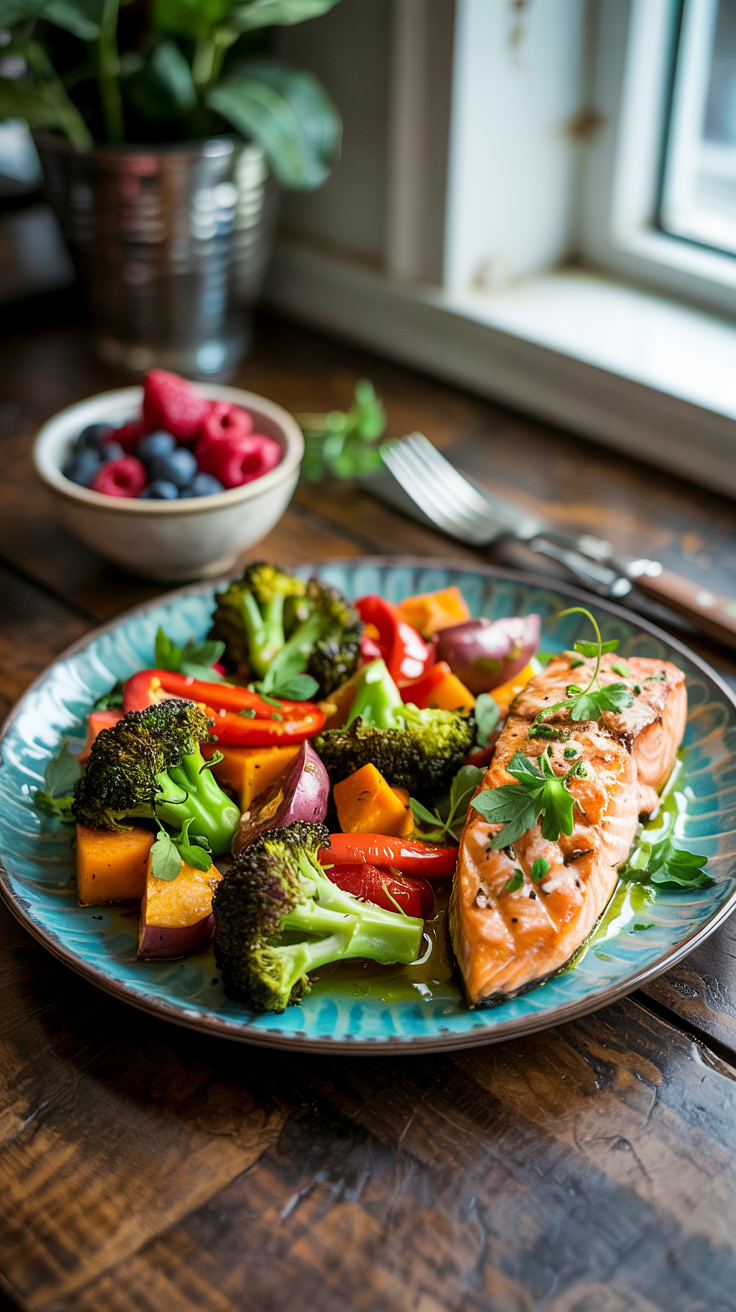
How the Paleo Diet Works
The Paleo Diet focuses on eating foods in their most natural form, which can help regulate blood sugar, reduce inflammation, and support lean muscle development. Key principles include:
- High-quality protein: Lean meats, fish, eggs, and seafood provide amino acids essential for muscle growth and recovery.
- Healthy fats: Nuts, seeds, avocado, and olive oil supply energy and support hormone production.
- Fruits and vegetables: Packed with vitamins, minerals, fiber, and antioxidants to aid recovery and overall health.
- No processed foods or refined sugar: Minimizes empty calories and reduces inflammation.
- No grains or legumes: Paleo avoids wheat, rice, beans, and other legumes, focusing instead on whole, nutrient-dense plant foods.
Benefits of the Paleo Diet
- Supports lean muscle growth: High-quality protein sources help repair and build muscle.
- Promotes fat loss: Whole foods and reduced processed carbs naturally reduce calorie intake and improve satiety.
- Improves metabolic health: Helps regulate blood sugar and supports insulin sensitivity.
- Reduces inflammation: Nutrient-rich whole foods and healthy fats can decrease inflammation and improve recovery.
- Enhances overall wellness: Vitamins, minerals, and antioxidants from fruits and vegetables promote long-term health.
Paleo-Friendly Foods
- Protein sources: Grass-fed beef, chicken, turkey, fish, eggs, seafood
- Vegetables: Leafy greens, broccoli, cauliflower, peppers, zucchini, carrots
- Fruits (in moderation): Berries, apples, oranges, pears
- Healthy fats: Avocado, olive oil, coconut oil, nuts, seeds
- Optional: Natural sweeteners like honey or maple syrup in small amounts
Foods to Avoid
- Processed and packaged foods
- Refined sugar, sodas, and candies
- Grains like wheat, rice, oats, and corn
- Legumes such as beans, lentils, peanuts
- Dairy products (except for certain paleo-friendly options like ghee or fermented dairy in moderation)
Tips for Success
- Plan your meals: Focus on whole foods for each meal to avoid processed options.
- Prioritize protein: Include high-quality protein in every meal to support muscle growth.
- Include variety: Rotate fruits, vegetables, and protein sources to get a broad spectrum of nutrients.
- Combine with strength training: Resistance exercises amplify the muscle-building benefits of the diet.
- Stay hydrated: Drink plenty of water and include electrolyte-rich foods like leafy greens and nuts.
Bottom Line
The Paleo Diet is a whole-food, nutrient-dense approach that supports muscle growth, fat loss, and overall health.
By focusing on unprocessed foods, high-quality proteins, and healthy fats, it creates an ideal environment for lean muscle development and sustainable energy.
When paired with consistent exercise and proper recovery, the Paleo Diet can help you achieve a stronger, leaner, and healthier body.
7. DASH Diet
The DASH Diet (Dietary Approaches to Stop Hypertension) was originally developed to help lower blood pressure, but it has also become popular among fitness enthusiasts for weight management, muscle preservation, and overall health.
This eating plan emphasizes whole, nutrient-dense foods, with a focus on reducing sodium while promoting heart-healthy nutrients.
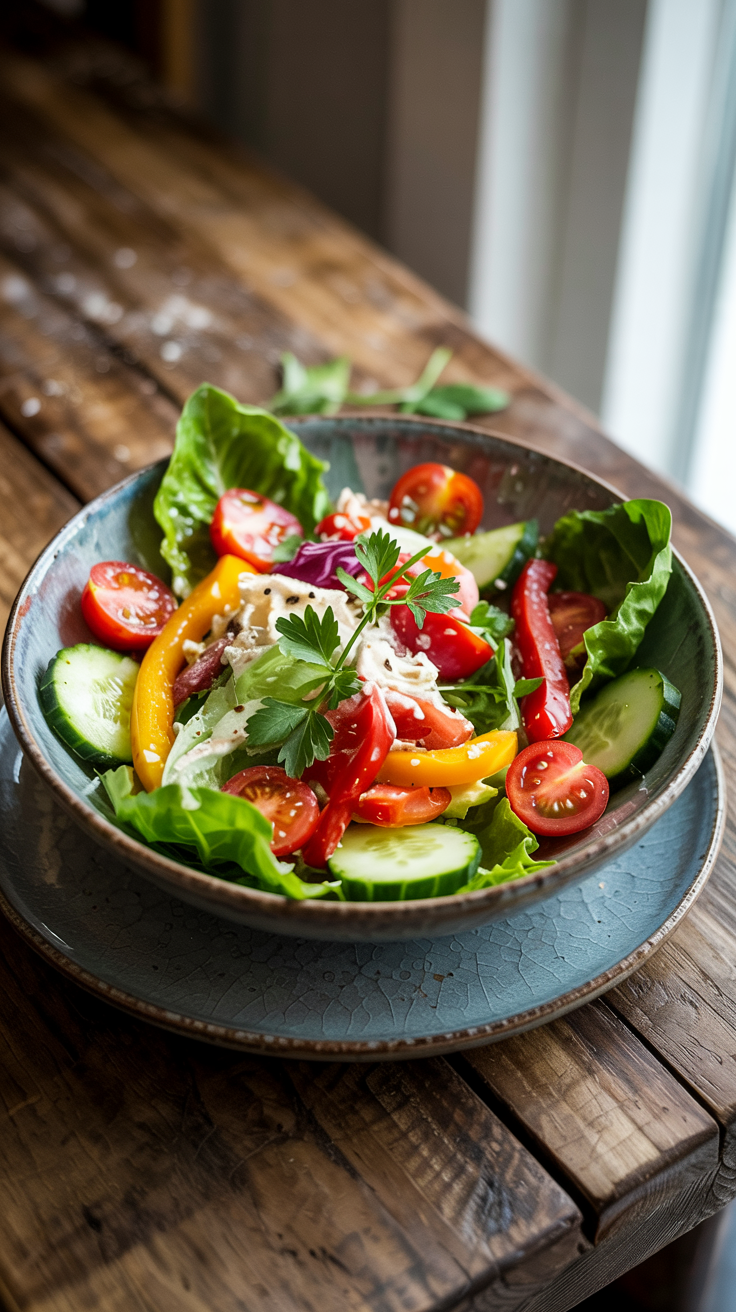
How the DASH Diet Works
The DASH Diet is based on balanced nutrition, encouraging the consumption of fruits, vegetables, whole grains, lean proteins, and low-fat dairy, while limiting sodium, added sugars, and processed foods. Key principles include:
- High in fruits and vegetables: Provides fiber, antioxidants, and essential vitamins and minerals.
- Whole grains for steady energy: Brown rice, oats, quinoa, and whole-grain bread supply complex carbohydrates to fuel workouts.
- Lean proteins: Fish, poultry, beans, nuts, and seeds provide amino acids essential for muscle repair and growth.
- Low-fat dairy: Supports bone health and adds protein without excessive saturated fat.
- Limited sodium and added sugars: Helps regulate blood pressure and prevents water retention, contributing to a leaner appearance.
Benefits of the DASH Diet
- Supports muscle health: Adequate protein intake helps repair and build muscle.
- Promotes fat loss: Fiber-rich foods keep you full and reduce overall calorie intake.
- Improves cardiovascular health: Low sodium and nutrient-rich foods help lower blood pressure and cholesterol.
- Enhances metabolic health: Balanced macronutrients and high fiber support stable blood sugar levels.
- Sustainable and flexible: Easy to follow long-term with minimal restriction, making it ideal for consistent results.
DASH-Friendly Foods
- Fruits and vegetables: Spinach, broccoli, berries, oranges, carrots, peppers
- Whole grains: Brown rice, oats, quinoa, whole-grain bread and pasta
- Lean proteins: Chicken, turkey, fish, eggs, legumes, nuts, and seeds
- Low-fat dairy: Greek yogurt, milk, cottage cheese
- Healthy fats: Olive oil, avocado, nuts, and seeds
Foods to Limit
- High-sodium processed foods (canned soups, packaged snacks, fast food)
- Sugary drinks and sweets
- Red meats and fatty cuts in excess
- Excessive salt in cooking or at the table
Tips for Success
- Plan meals around vegetables: Aim for at least half your plate to be vegetables.
- Choose whole foods over processed options: Minimizes hidden sodium and added sugar.
- Include lean protein in each meal: Supports muscle repair and growth.
- Pair with exercise: Strength training and cardio enhance fat loss and muscle definition.
- Monitor sodium intake: Read labels and aim for the recommended 1,500–2,300 mg per day.
Bottom Line
The DASH Diet is a heart-healthy, nutrient-rich eating plan that not only supports overall wellness but also helps with muscle preservation, fat loss, and consistent energy for workouts.
Its emphasis on whole foods, lean proteins, and low sodium makes it ideal for anyone looking to build a stronger, healthier body while improving cardiovascular health and long-term fitness.
8. Vegan Diet
The Vegan Diet eliminates all animal products, including meat, dairy, eggs, and often honey. Instead, it focuses on plant-based foods such as vegetables, fruits, legumes, grains, nuts, and seeds.
While some people adopt veganism for ethical or environmental reasons, it’s also an effective approach for weight management, heart health, and building lean muscle when carefully planned.
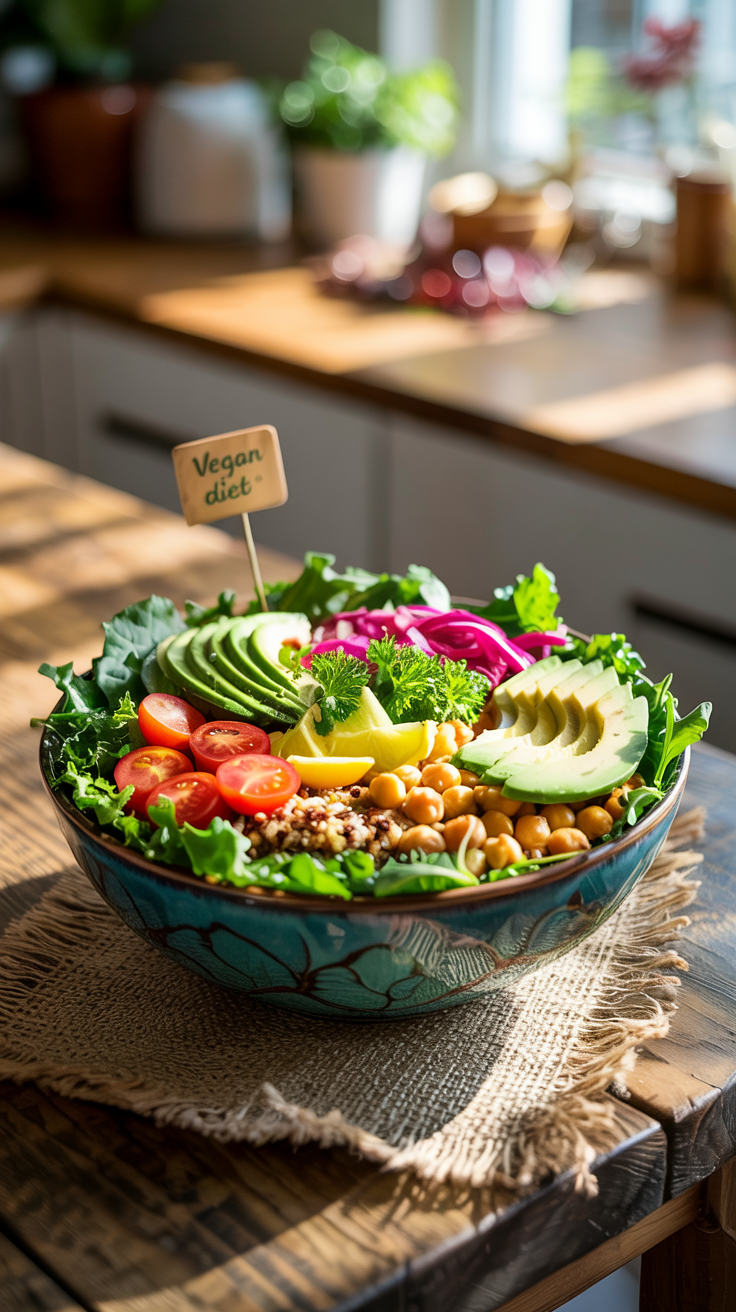
How the Vegan Diet Works
A vegan diet emphasizes whole, minimally processed plant foods, which are naturally high in fiber, vitamins, minerals, and antioxidants.
Since plant-based proteins are typically lower in calories and fat than animal proteins, a vegan diet can help with fat loss while supporting muscle maintenance when protein intake is carefully monitored.
Key principles include:
- Plant-based proteins: Beans, lentils, tofu, tempeh, chickpeas, seitan, and quinoa provide essential amino acids for muscle repair and growth.
- Complex carbohydrates: Whole grains, sweet potatoes, oats, and brown rice supply steady energy for workouts.
- Healthy fats: Nuts, seeds, avocado, and plant oils support hormone function and satiety.
- High fiber intake: Vegetables, fruits, and legumes improve digestion, keep you full, and reduce fat storage.
- Micronutrient awareness: Vitamin B12, iron, calcium, and omega-3s need special attention, often via fortified foods or supplements.
Benefits of a Vegan Diet
- Supports fat loss: High fiber and low-calorie foods naturally reduce calorie intake.
- Promotes lean muscle maintenance: Plant-based proteins provide amino acids necessary for muscle repair.
- Improves heart health: Low in saturated fat and rich in antioxidants, the diet supports cardiovascular function.
- Anti-inflammatory: Plant foods are rich in compounds that reduce inflammation and support recovery.
- Sustainable and ethical: Many adopt this diet for environmental or ethical reasons, providing a long-term, healthy eating strategy.
Vegan-Friendly Foods
- Protein sources: Tofu, tempeh, edamame, lentils, chickpeas, beans, seitan, quinoa, soy milk
- Vegetables: Leafy greens, broccoli, peppers, cauliflower, zucchini
- Fruits: Berries, apples, bananas, citrus fruits
- Whole grains: Brown rice, oats, quinoa, whole-wheat pasta
- Healthy fats: Avocado, almonds, walnuts, chia seeds, flaxseeds, olive oil
Foods to Avoid
- Animal-derived products: Meat, poultry, fish, eggs, dairy
- Highly processed vegan junk foods: Vegan cookies, chips, and sugary plant-based snacks
- Excess refined grains and sugar
Tips for Success
- Track protein intake: Ensure you get enough protein daily to maintain or build muscle.
- Plan balanced meals: Combine legumes, grains, and seeds to cover all essential amino acids.
- Consider supplements: Vitamin B12 is essential, and omega-3 (from algae oil) may be needed.
- Combine with exercise: Strength training enhances muscle maintenance and overall body composition.
- Stay consistent: Following a well-planned vegan diet consistently yields long-term health and fitness benefits.
Bottom Line
The Vegan Diet is a plant-powered, nutrient-rich approach to health and fitness.
When planned correctly, it can support fat loss, lean muscle maintenance, and overall wellness.
By prioritizing plant-based proteins, complex carbs, and healthy fats, you can fuel workouts, recover efficiently, and build a stronger, leaner body—all while enjoying a diet that is ethical and environmentally friendly.
9. Whole30 Diet
The Whole30 Diet is a 30-day nutrition program designed to reset your body, improve digestion, reduce inflammation, and help you identify food sensitivities.
Unlike typical diets that focus on weight loss alone, Whole30 emphasizes whole, unprocessed foods and eliminates sugar, alcohol, grains, legumes, dairy, and processed additives for 30 days.
This approach can help you improve body composition, energy levels, and overall health.
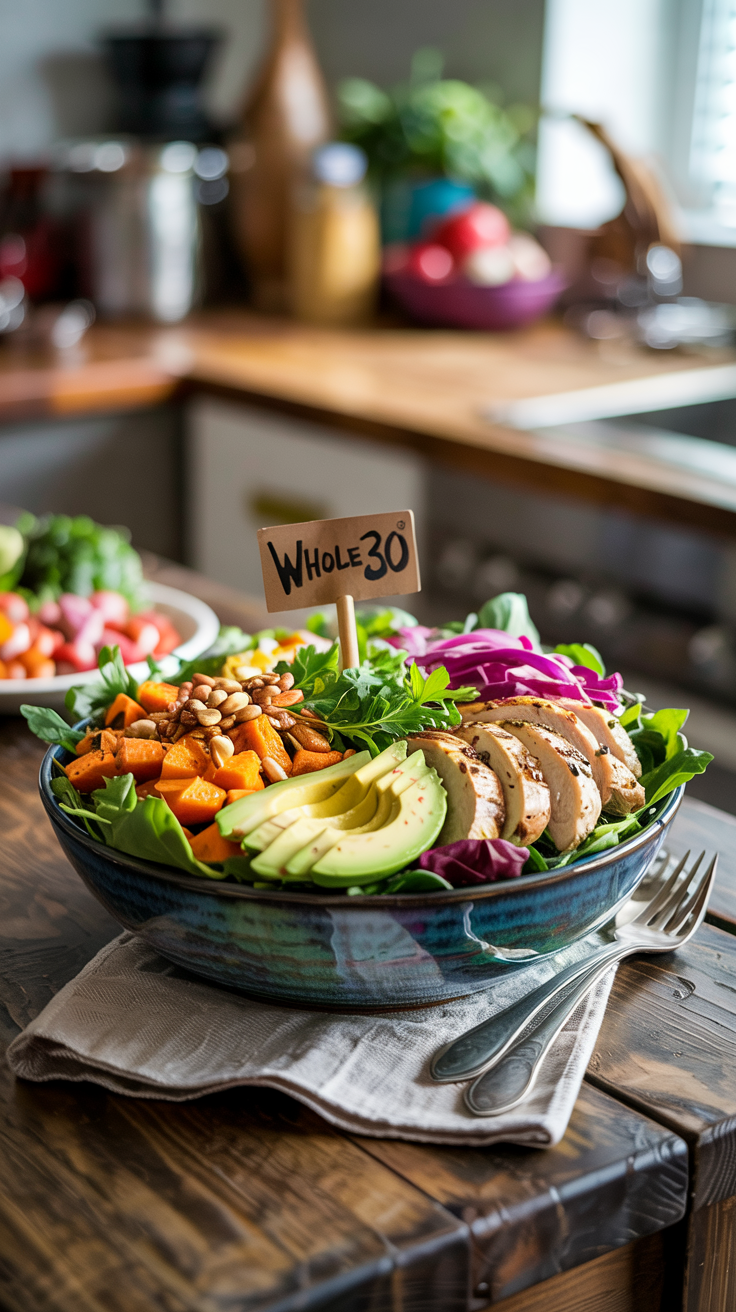
How the Whole30 Diet Works
Whole30 is not just a short-term diet—it’s a nutritional reset. The key concept is to eliminate potentially inflammatory or hormone-disrupting foods for 30 days, allowing your body to heal and stabilize. After the program, foods are slowly reintroduced to see how your body reacts.
Key principles include:
- Eliminate sugar and sweeteners: Refined sugar, artificial sweeteners, honey, and maple syrup are removed to stabilize insulin and reduce cravings.
- Avoid grains and legumes: No rice, wheat, corn, oats, beans, or peanuts, which can sometimes cause digestive issues or inflammation.
- No dairy: Milk, cheese, yogurt, and cream are excluded to reduce potential inflammation.
- Focus on whole foods: Lean meats, seafood, eggs, vegetables, fruits, nuts, seeds, and healthy fats form the core of your diet.
- No processed foods or additives: Preservatives, MSG, and artificial ingredients are avoided.
Benefits of the Whole30 Diet
- Reduces inflammation: Eliminating processed and inflammatory foods can improve digestion and joint health.
- Supports fat loss: Whole, nutrient-dense foods naturally reduce calorie intake and improve satiety.
- Improves energy and focus: Stabilized blood sugar levels reduce energy crashes and improve mental clarity.
- Identifies food sensitivities: By reintroducing foods after 30 days, you can detect what triggers digestive or inflammatory issues.
- Supports lean muscle preservation: Emphasis on protein-rich foods ensures your muscles stay fueled during the reset.
Whole30-Friendly Foods
- Protein sources: Chicken, turkey, lean beef, eggs, seafood
- Vegetables: Leafy greens, broccoli, cauliflower, zucchini, peppers
- Fruits: Berries, apples, citrus fruits, pears
- Healthy fats: Avocado, olive oil, coconut oil, nuts, and seeds
- Optional flavorings: Herbs, spices, vinegar, mustard (without sugar)
Foods to Avoid
- Added sugar, honey, maple syrup, artificial sweeteners
- Grains: wheat, rice, oats, corn
- Legumes: beans, lentils, peanuts, soy
- Dairy: milk, cheese, yogurt, cream
- Alcohol and most processed foods or sauces
Tips for Success
- Plan meals ahead: Preparing Whole30-friendly meals reduces the temptation to eat off-plan.
- Prioritize protein: Each meal should contain a solid portion of protein to support muscle maintenance.
- Include vegetables in every meal: They provide fiber, vitamins, and antioxidants.
- Hydrate consistently: Water, herbal teas, and black coffee are allowed during the program.
- Combine with exercise: Strength training and moderate cardio enhance fat loss and overall fitness results.
Bottom Line
The Whole30 Diet is a 30-day nutritional reset that emphasizes whole, unprocessed foods and eliminates potentially inflammatory items.
It helps improve digestion, energy levels, fat loss, and lean muscle preservation.
By following Whole30, you can better understand how your body reacts to different foods, set the foundation for healthier eating habits, and support your fitness and wellness goals.
10. Low-Fat Diet
A Low-Fat Diet focuses on reducing the intake of dietary fat, particularly saturated and trans fats, while emphasizing carbohydrates and lean proteins.
This diet is often used for weight loss, heart health, and improving body composition, and it can be effective when combined with proper portion control and consistent exercise.
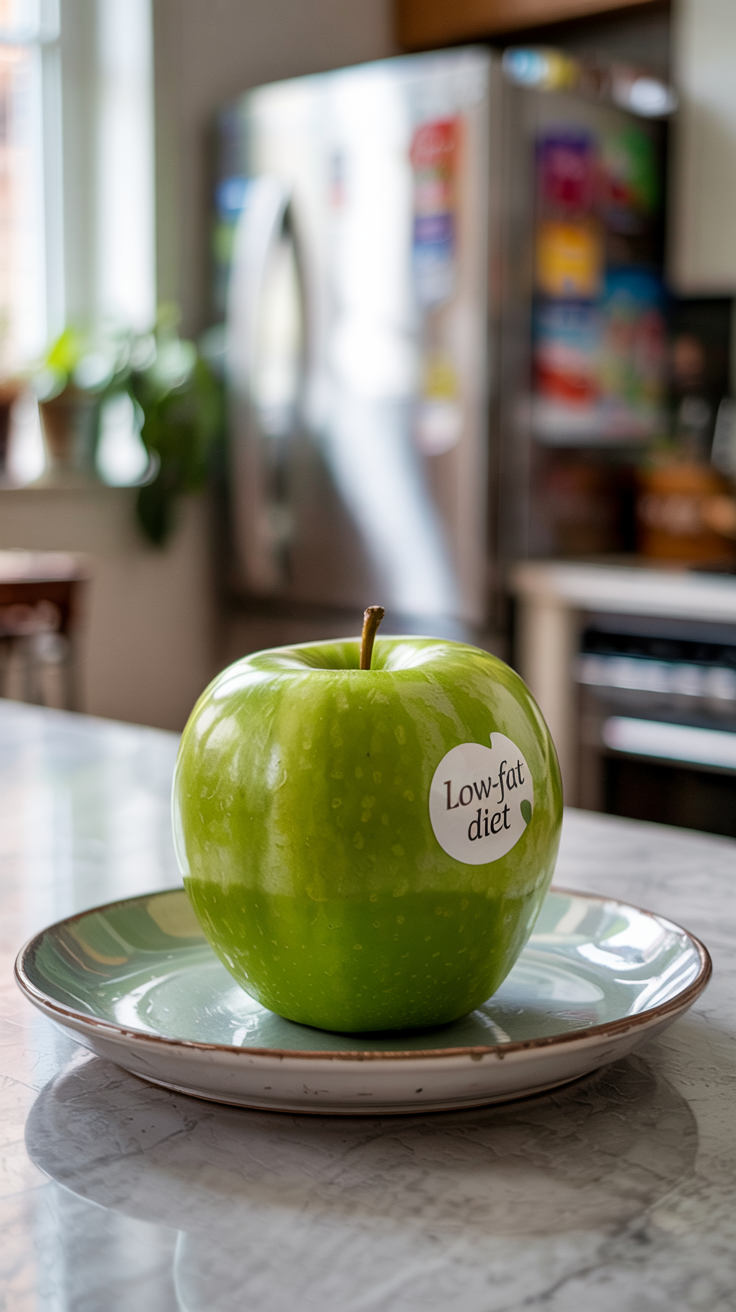
How the Low-Fat Diet Works
The premise of a low-fat diet is simple: by reducing fat intake, which is calorie-dense (9 calories per gram compared to 4 calories per gram for carbs or protein), overall calorie consumption is reduced, helping with fat loss. Key principles include:
- Limit high-fat foods: Avoid fried foods, fatty cuts of meat, full-fat dairy, and processed snacks.
- Emphasize lean proteins: Chicken breast, turkey, fish, tofu, legumes, and egg whites supply essential amino acids without excess fat.
- Prioritize complex carbohydrates: Whole grains, fruits, and vegetables provide energy for workouts and daily activity.
- Include healthy fats in moderation: Small portions of olive oil, avocado, and nuts are acceptable to support hormone balance and overall health.
Benefits of a Low-Fat Diet
- Supports fat loss: Lowering fat intake naturally reduces calories, aiding in weight and fat loss.
- Improves heart health: Reduces saturated fat, which can lower cholesterol levels and improve cardiovascular health.
- Supports digestive health: High-fiber, low-fat foods promote regularity and gut health.
- Sustains energy: Complex carbohydrates provide steady energy for workouts and daily activity.
- Supports lean muscle maintenance: By pairing with adequate protein, the diet helps preserve muscle while losing fat.
Low-Fat Diet-Friendly Foods
- Lean proteins: Skinless chicken, turkey, fish, egg whites, tofu, legumes
- Fruits: Apples, berries, oranges, bananas
- Vegetables: Leafy greens, broccoli, cauliflower, zucchini, peppers
- Whole grains: Brown rice, oats, quinoa, whole-grain bread
- Healthy fats (in moderation): Small amounts of avocado, nuts, seeds, and olive oil
Foods to Avoid
- Fried foods and deep-fried snacks
- Full-fat dairy: cheese, cream, whole milk, butter
- Fatty cuts of meat: pork belly, ribeye, lamb chops
- Processed foods with high fat content: chips, pastries, packaged snacks
- Trans fats and hydrogenated oils
Tips for Success
- Measure portions: Even healthy fats contain calories, so moderate their intake.
- Combine with exercise: Cardio and resistance training enhance fat loss and maintain lean muscle.
- Focus on whole foods: Avoid processed foods that are low-fat but high in sugar or refined carbs.
- Plan balanced meals: Each meal should include lean protein, complex carbs, and plenty of vegetables.
- Stay consistent: Consistency over time yields the best fat-loss and health results.
Bottom Line
A Low-Fat Diet is a heart-healthy, calorie-conscious eating plan that can help reduce body fat, improve cardiovascular health, and support lean muscle maintenance when combined with adequate protein and strength training.
By emphasizing whole, nutrient-dense foods and limiting saturated and trans fats, this diet can be an effective tool for improving overall health, body composition, and fitness performance.
Additional Tips to Burn Belly Fat Faster
Burning belly fat requires a combination of nutrition, exercise, and lifestyle strategies. While no diet alone can target fat loss in one specific area, following these science-backed tips can accelerate overall fat loss and help you achieve a leaner, more defined midsection.
1. Prioritize Protein in Every Meal
Protein supports muscle growth and repair, boosts metabolism, and keeps you full longer. Eating adequate protein reduces cravings and helps prevent overeating, which is essential for losing stubborn belly fat.
Sources to include:
- Chicken breast, turkey, lean beef
- Eggs and egg whites
- Greek yogurt and cottage cheese
- Tofu, tempeh, and legumes
2. Incorporate Strength Training
Building muscle through resistance training increases your resting metabolic rate, allowing you to burn more calories even at rest. Focus on compound exercises like squats, deadlifts, bench presses, and pull-ups to work multiple muscle groups efficiently.
3. Add High-Intensity Interval Training (HIIT)
HIIT workouts alternate between intense bursts of activity and short recovery periods. They are highly effective for burning calories and reducing visceral fat, which is the dangerous fat surrounding your organs.
Example HIIT routine:
- 30 seconds sprint, 1-minute walk – repeat for 15–20 minutes
- Jump squats or burpees for 20 seconds, 10-second rest, repeat 8–10 rounds
4. Reduce Refined Carbs and Sugary Foods
High intake of refined carbohydrates and added sugar promotes fat storage around the belly. Minimize processed snacks, sodas, pastries, white bread, and sugary drinks. Opt for complex carbs like oats, quinoa, brown rice, and sweet potatoes, which provide energy without spiking insulin.
5. Increase Fiber Intake
Soluble fiber absorbs water and forms a gel that slows digestion, helping you feel full and reducing calorie intake. Fiber also helps regulate blood sugar, which can reduce fat accumulation in the belly.
Fiber-rich foods include:
- Oats, chia seeds, flaxseeds
- Beans and lentils
- Vegetables like broccoli, Brussels sprouts, and leafy greens
- Fruits such as berries, apples, and pears
6. Stay Hydrated
Drinking enough water supports metabolism and fat oxidation. Water also helps reduce bloating and curbs unnecessary snacking caused by dehydration. Aim for at least 2–3 liters per day, more if you exercise intensely.
7. Prioritize Sleep and Manage Stress
High stress levels and poor sleep increase cortisol, a hormone linked to fat storage around the midsection. Strive for 7–9 hours of quality sleep per night and incorporate stress-reducing practices like meditation, yoga, or deep breathing exercises.
8. Consider Intermittent Fasting or Meal Timing
Intermittent fasting can help reduce overall calorie intake and improve insulin sensitivity, which aids fat burning. Even simple strategies like not eating late at night or maintaining a consistent eating window can support belly fat loss.
9. Limit Alcohol Consumption
Alcohol can contribute to visceral fat accumulation, especially around the belly. Reducing alcohol intake—or eliminating it entirely—can accelerate fat loss and improve overall health.
10. Track Progress and Stay Consistent
Keep track of your measurements, weight, and fitness routine to stay accountable. Remember, spot reduction isn’t possible, but consistent nutrition, exercise, and lifestyle habits will reduce overall body fat, including belly fat, over time.
Bottom Line
Burning belly fat requires a holistic approach that combines proper nutrition, strength training, cardio, stress management, and adequate sleep.
By following these strategies consistently, you can accelerate fat loss, maintain lean muscle, and achieve a tighter, stronger midsection.
Frequently Asked Questions (FAQ)
1. What is the best diet for building muscle?
The best diet for muscle gain is high in protein, moderate in carbs, and includes healthy fats. Diets like high-protein, Paleo, Mediterranean, and Keto can all support muscle growth when combined with consistent strength training and adequate calories.
2. How many calories should I eat to gain muscle?
To gain muscle, you need a calorie surplus, meaning you consume more calories than you burn. A common starting point is 250–500 calories above your maintenance level, adjusted based on progress. Focus on nutrient-dense foods to fuel workouts and recovery.
3. Can I build muscle on a vegan diet?
Yes, building muscle on a vegan diet is possible by consuming enough protein from plant-based sources such as tofu, tempeh, lentils, beans, quinoa, seitan, nuts, and seeds. Combining these proteins throughout the day ensures you get all essential amino acids.
4. How often should I eat to gain muscle?
Eating 3–6 balanced meals per day works well for most people. Prioritize protein at every meal to support muscle repair, and include complex carbs and healthy fats for energy and recovery. Meal timing around workouts can also improve performance.
5. Is intermittent fasting good for muscle gain?
Yes, intermittent fasting can work for muscle gain if you consume enough protein and calories within your eating window.
Pairing IF with strength training and nutrient-dense meals can help preserve muscle while improving fat loss.
6. Which foods help burn belly fat fastest?
Foods high in protein and fiber, like lean meats, eggs, legumes, vegetables, and whole grains, support fat loss.
Avoid refined carbs, sugary foods, and excessive alcohol, which promote fat storage around the midsection.
7. Can I do cardio and strength training together?
Yes, combining strength training and cardio can maximize fat loss and muscle retention. Perform resistance training first to preserve muscle, then follow with moderate-intensity cardio or HIIT for fat burning.
8. How long before I see results?
Results depend on consistency, diet, and training. Noticeable changes can occur in 4–6 weeks, but significant fat loss and muscle gain usually take 2–3 months or more.
Track progress with measurements, strength improvements, and body composition, not just scale weight.
9. Do I need supplements to build muscle?
Supplements are optional but helpful. Whey protein, creatine, BCAAs, and multivitamins can support muscle gain and recovery, but whole foods should be your primary source of nutrition.
10. Can I gain muscle while losing fat?
Yes, with the right approach—high-protein diet, strength training, moderate calorie deficit, and adequate recovery—you can achieve body recomposition, building lean muscle while losing fat simultaneously.
Final Thoughts
Building muscle, losing fat, and achieving a stronger, leaner physique is a journey that combines smart nutrition, consistent exercise, and lifestyle management.
There isn’t a single “magic” diet or quick fix; real results come from understanding your body, fueling it properly, and staying consistent over time.
Nutrition is the foundation. Whether you follow a high-protein diet, Keto, Paleo, Mediterranean, or a well-planned vegan plan, what matters most is calorie balance, nutrient density, and protein intake to support muscle repair and growth.
Pairing your diet with strength training and some form of cardio ensures your body not only burns fat but also builds lean muscle, giving you a toned, athletic appearance.
Lifestyle factors are equally important. Quality sleep, stress management, and hydration all play a role in recovery, fat metabolism, and hormone balance.
Ignoring these elements can slow your progress, even if your workouts and meals are on point.
Consistency is key. Results are not instantaneous, and the most successful individuals are those who adopt sustainable habits rather than following short-term, restrictive diets. Over time, these habits compound, helping you lose fat, gain muscle, and improve overall health.
Remember, tracking progress is crucial. Use measurements, strength improvements, and energy levels as your guide, rather than relying solely on the scale. Every small improvement—whether lifting heavier weights, increasing endurance, or reducing waist size—is a step toward your goal.
Finally, while supplements like whey protein, creatine, and multivitamins can help optimize results, they are complements, not replacements, for a solid diet and training routine. Focus on whole foods, consistent workouts, and recovery first.
In conclusion, achieving your dream physique is about creating a balance between eating right, training smart, and living healthfully.
Stick with it, be patient, and trust the process. The journey may take time, but the rewards—a healthier, stronger, and more confident body—are absolutely worth it.



